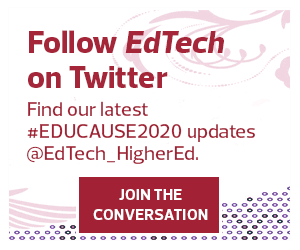The 3 Pillars of Student Success for HBS Online
“We’ve all experienced online courses where a talking head references slides for 30 minutes, maybe an hour,” Crowley said. “Maybe at the end they give some multiple-choice questions, but students are falling asleep, checking their phones and zoning out.”
To avoid falling victim to poor engagement and low completion rates, HBS Online needed a platform and an approach that kept students engaged and active. There was a catch, however: At Harvard Business School, the brick-and-mortar MBA and executive programs require high levels of participation with inductive learning. But the online program, Crowley said, had more students to cater to and without the benefit of a physical campus and in-person interactions.
“How could we scale this?” she asked. “We needed to think about 10 times the 1,800 students in the MBA program.”
Ultimately, Crowley said, the program was built around three pillars: All the learning had to be active, social and case-based.
MORE ON EDTECH: How can colleges improve online learning with artificial intelligence?
Active Learning in an Online Landscape
HBS Online takes several measures to ensure consistently high levels of active engagement among its students. While the program is fortunate in its access to Harvard faculty and resources, Crowley and her peers knew that wouldn’t be enough on its own.
“We know that the content itself needs to keep their attention,” Crowley said. “We had to think about the important things from the live classroom that we could re-create online. The activities drive engagement.”
Coursework is designed so students are being engaged every three to five minutes through an assortment of instructional elements, including polls and quizzes. Lessons are also gated so that no student can advance too far ahead of his or her peers. “That way there’s always a community of students at the same place in the course.”
DISCOVER: Find out how to improve online learning user experiences.
A Social Approach to Student Education
With an estimated 85 percent of jobs filled through networking activities, social elements can play a critical role in students’ success. Students who enroll in HBS Online have multiple opportunities to engage and network with one another and with faculty.
Students can participate and interact on discussion threads focused on specific topics. The program also provides students with a self-service portal, and many students engage with one another on social media.
“Our platform was built to foster engagement and collaboration and to enhance their learning while they build a strong global network,” Crowley said.
Promoting Student Success with Case-Based Learning
A critical aspect of the HBS Online program is case-based learning. Faculty members, many of whom are well-connected in the business world, work their own networks to simulate real-world problems and scenarios that a student might encounter in professional settings.
“We have companies like Disney and Google that help with cold-calling campaigns,” Crowley said. “We bring lessons to life through real cases.”
The program, Crowley told listeners, has significantly grown over the years. “In the early days of creating this program, I was one of a band of six people who had to do everything from creating the content and business systems to building the staff to support them. We started lean and mean.”
For online education programs looking to improve their student engagement and success rates, Crowley offered three tips:
- Start with your learners. Students come first. Meet your students where they are while providing unparalleled learning experiences with efficient and empathetic service.
- Design your systems with scalability in mind. Don’t be afraid to think radically, and make decisions with an eye toward growth.
- Experiment and iterate. You’re going to have to adjust and pivot. “Lean into it,” Crowley said. “It’s the only way to stay competitive.”
Find our complete coverage of EDUCAUSE 2020, including more interviews and advice from higher ed experts, here.











